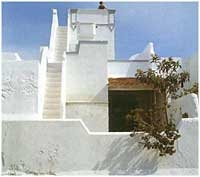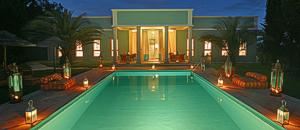|
Tourism |
|
| Portugal > Tourism > Algarve > Olhão | |
| History | Sightseeing | Lodging | Beaches | |
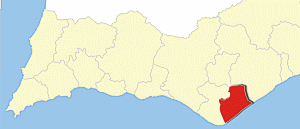 One of the Algarve´s main fishing ports, Olhão has square whitewashed houses with flat roof terraces and chimneys that are evocative of Moorish architecture. Behind the parish church of Nossa Senhora do Rosário, from the 17th century, the chapel of Nossa Senhora dos Aflitos is where the wives of fishermen gather to pray for their safety when the weather is stormy. But the town´s main attraction is its market, one of the most animated and picturesque |
|
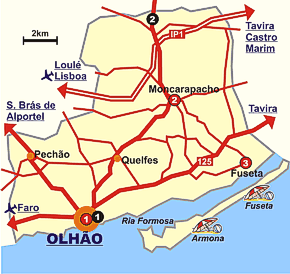
|
| of the Algarve, with an enormous variety of seafood but also local farmers selling such products as fruit, honey and live chickens. Nearby, the village of Fuzeta is like Olhão on a small scale and is well appreciated by windsurfers. |
| A few kilometres inland, Moncarapacho is proud of its church of Santo Cristo, with a beautiful doorway and painted arches. In the region, the Parque Natural da Ria Formosa is considered the most important sanctuary of wildlife in the Algarve. Its lagoons, marshes, channels and islets are abundant in shellfish such as cockles, clams and oysters and shelter, amongst other species, a variety of birds such as the cattle egret, the white stork, the purple gallinule, the red-crested pochard, etc. This natural reserve stretches along 60 kilometres (40 miles) and its rich ecosystem is ideal for the development of varied fauna and flora. |
|
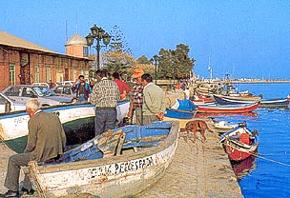 |
| History |
| The town of Olhão is essentially and historically linked to the local fishing industry and only grew into existence in the 17th Century. It has about 30,000 inhabitants and was raised to the status of a town in 1808 after 17 local fishermen successfully crossed the Atlantic Ocean without charts in their small fishing boat "Bom Sucesso". Their purpose was to announce to the exiled King of Portugal, Dom João IV, that the French invading armies had been defeated and had returned to France leaving Portugal free for the King to return. It was in this town in 1882 that the first canning factory for tuna and sardines was established. Very soon canning it became the leading industry of the Algarve. |
|
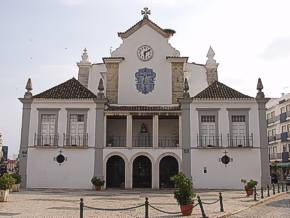 |
| Sightseeing |
Chapel of Our Lady of Soletude An example of rural architecture, was originally the place of worship chosen by seamen. Its construction dates from the 17th century and the altar retables are from the 18th century. Holy Spirit Chapel Site of religious pilgrimages during the 17th and 18th centuries, the Capela do Espírito Santo can boast of a vast and significant patrimony from that period. Of simple architecture in the Baroque style, the colourful tiles from the 17th century and paintings representing the Heart of Jesus and the Nativity (from the same period) are its most outstanding features. Next to the chapel, is the Museu Paroquial de Moncarapacho, the parish museum. Our Lady of the Rosary Mother Church The solid Igreja Matriz stands at the Praça da Restauração. Built in the 17th century with donations made by the fishermen, is is also known for having been the fist stone building of the city. The Baroque façade, richly decorated with volutes, exhibits a shield on the fronton, flanked by two angels. To the left, the bell-tower dominates all the building, rising outlined against the sky. |
|
 |
| Marim
Cottage Poet, musician and painter, João Lúcio is a charismatic figure of Olhão, always associated to the Chalé de Marim (or Chalé Dr. João Lúcio). He built it in 1916, at the Quinta do Marim, in a pine-wood by the sea, two years before he died. Museu Paroquial de Moncarapacho Next to the Holy Spirit Chapel, the Museu Paroquial owes much to the efforts made by father Isidoro Domingos da Silva, who collected items representative of the local etnography. It also displays important archaeological findings and a religious collection from the 16th to the 18th Century |
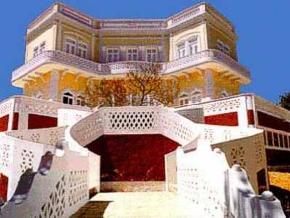 |
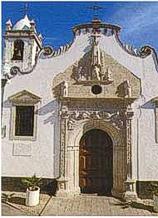 |
 |
||
|
Marim Cottage
|
|
Museu
|
|
Mercado
|
| Armona has a camping park, further away, but also in the Ria Formosa and easily reached by boat, the islands of Culatra, of Farol (Lighthouse) and of Deserta (Deserted) are strips of sand that stretch along the coast and invite visitors to enjoy sun-baths and swimming. They are paradisiacal places, where the sun rises and sets each day wrapped in magical shades of fire. |
| Lodging |
|
|
|

|
| History | Sightseeing | Lodging | Beaches | |
| Portugal > Tourism > Algarve > Olhão | |
|
Olhão |
|
